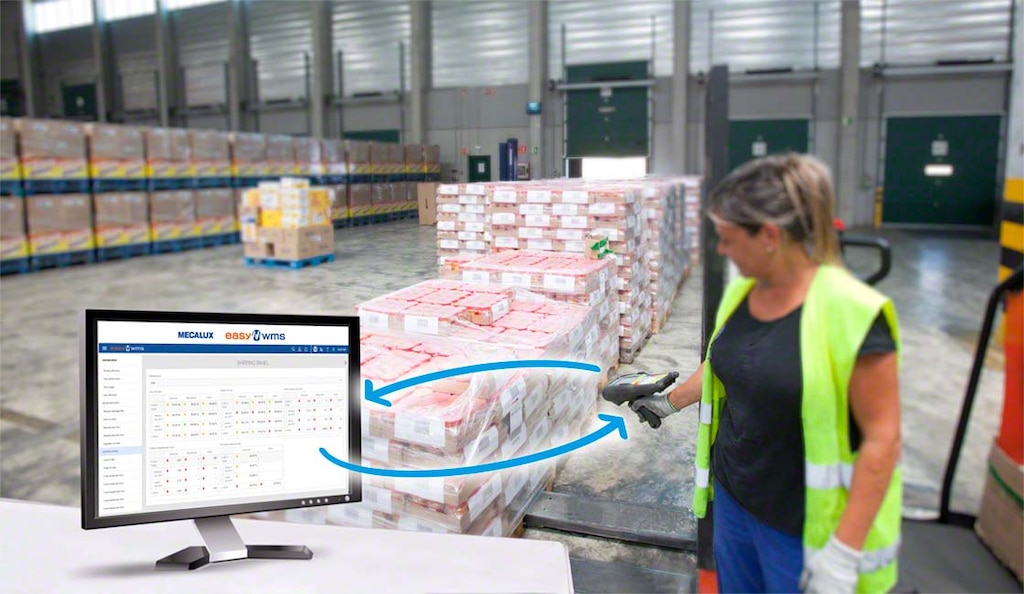
Periodic inventory system: more frequent stock counts to improve accuracy
A periodic inventory system is one of the most common ways of taking inventory. It’s a process by which companies maintain control over goods in their warehouse and, as the name indicates, is carried out periodically (monthly, quarterly, semiannually, or annually).
Periodic inventory is still a form of physical inventory; that is, it’s a manual operation requiring workers to go around the facility counting the products stored on the racks one by one. Therefore, it needs to be optimally organized to be done quickly and without making mistakes.
In this post, we examine the advantages and drawbacks to this process, as well as the differences between this and other types of inventory, such as a perpetual inventory system.
What is periodic inventory and what does it comprise?
A periodic inventory system is a form of inventory control carried out manually from time to time, normally several times a year. It consists of counting the stock in the locations in the facility to determine the exact quantity of products stored on a specific date.
Goods are one of the most important assets of any business. Consequently, maintaining strict stock control and conducting inventories are priorities for companies. The goal is to avoid stockouts, which could cause order delivery delays or, just the opposite, overstock; the latter constitutes storing products that exceed demand, entailing costs for the business.
For a periodic inventory system to be efficient, companies that implement them need to schedule in advance the exact dates on which the count will be done. This way, the operators can organize themselves to be able to carry it out effectively. It’s best to prioritize times of off-peak business activity so as not to hinder other processes.

Pros and cons of a periodic inventory system
As explained above, periodic inventory is a type of physical inventory that takes place fairly regularly.
One of its benefits is that it doesn’t require an automated system to record the data: operators need only a pencil and paper to jot down the quantities of available items in the warehouse; (in smaller facilities, inventory is done with Excel, although this practice isn’t recommended).
In addition, while traveling around the entire building counting the items stored, the operators can visually verify whether the products are in good condition.
Lastly, the company can compare the number of actual items in the facility with the amount recorded in the book inventory (governed by the warehouse management system (WMS) or ERP (enterprise resource planning) system).
Nevertheless, the main disadvantage of a physical inventory system is that, since it’s manual, there’s a high risk of making mistakes. Therefore, it’s more apt for small firms with few products in their facilities and a low unit value per product.
It should be noted that this process requires time and resources. To be done optimally, warehouse operations should be paused completely or in part, dedicating hours to counting the products in each location.
Likewise, a periodic inventory only gives you a reliable snapshot of the warehouse situation at specific intervals during the year. As a result, you don’t have information in real time, nor can you prevent imbalances from occurring.
Annual vs. periodic inventory
When should you do inventory? Although there’s no designated time for businesses to carry out this process (it will depend on each company’s internal structure), it’s advisable to do it at least once a year. Otherwise, you could have major disparities between the book inventory and the physical stock counts, as well as recurring stockouts.
Annual inventory, as its name indicates, comprises a count done once a year. The operation itself is the same we’ve seen up to now: employees travel around the facility, counting stock.
The advantage of periodic inventory over annual inventory is that the information will be much more up to date (the more frequent, the more accurate). However, as noted above, it’s an operation that consumes a lot of time and resources (especially when done several times a year).
For that reason, some companies opt to do periodic inventories as opposed to an annual one when, throughout the year, they have stock issues that demonstrate the inadequacy of conducting a single count per year.
Inventory cycle counting vs. periodic inventory
Cycle counting consists of periodically counting groups of SKUs instead of having to count all warehouse stock at once.
If cycle counting is carried out, the way in which the items will be counted should be organized beforehand. For example, high-turnover and valuable merchandise will be counted more frequently. This can also be organized by zone, product type, etc.
Every day or few days, workers devote a limited amount of time to this task. This precludes having to halt business activity, as in the case of periodic and yearly inventory. Moreover, with cycle counting, stock data are more current for more valuable and best-selling products.
Cycle counting might seem more suitable than periodic inventory, as it doesn’t impact business activity as much and keeps more up-to-date records of the more critical SKUs. But its planning could become unnecessarily complex in facilities that manage a variety of relatively small products. Furthermore, in contrast with a periodic inventory system, you never have a full picture of the situation of the entire warehouse at a specific point in time.
Perpetual vs. periodic inventory
For companies with a lot of products, periodic inventory won’t suffice. What they really need is to maintain a perpetual inventory to know the status of the items in the facility at all times.
Perpetual inventory consists of a record in real time of the movements made in the facility (goods receipts, storage, order processing, goods dispatch, etc.).
How is this done? By means of a warehouse management system such as Easy WMS from Interlake Mecalux. This software controls and coordinates everything that occurs in the facility. To do so, it identifies the items from the moment they arrive at the warehouse (via RF scanners or handheld barcode scanners) and assigns them a location based on different parameters. Then, it sends instructions to the operators on what to do with each product at every turn.

From periodic to perpetual inventory
A periodic inventory system is a way to control the goods stored at a specific time. As seen above, this operation can be very useful for certain companies (especially those with few SKUs stored). Nevertheless, there are other businesses that need to be informed at all times on the status of their warehouse to make improvement decisions and serve their customers without delay.
Whatever the case, it’s ideal to be equipped with a warehouse management system (WMS). On the one hand, it enables you to rigorously monitor the goods. On the other, in the event that you want to do a physical inventory, the WMS optimizes this operation.
Installing a WMS such as Easy WMS is easier than it sounds. And, most importantly, this program is so intuitive that it facilitates the work of the operators. Hence, the company will be in control of its warehouse shortly after implementation and with complete accuracy. Get in touch so we can show you how Easy WMS can help you to take an effective inventory and boost your business.
